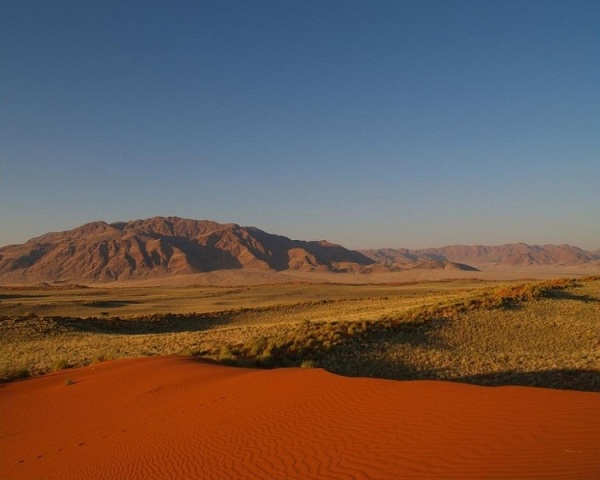Namibia is one of those countries to have gracefully survived the intense rollercoaster rides brought forth by life. Raid this article for more facts.
Facts About Namibia
On the south-west coast of the African Continent lies the very first country in the world to have incorporated the protection of the environment into its constitution! Officially identified as ‘The Republic as Namibia’, this nation boasts of a population of 2.2 millions, as of 2009 UN reports and a total area of 824,292 sq km. These dry lands were initially occupied by Bushmen, Damara, Namaqua, and the immigrating Bantu until Portuguese navigators Diogo Cão in 1485 and Bartolomeu Dias in 1486, stumbled upon the region. In the 19th century, Namibia was involuntarily declared a German Imperial protectorate and eventually, the discovery of diamonds sparked the invasion of Europeans. Namibia was relieved of German colonization at the close of World War I. However, this freedom was soon snatched away once the ‘League of Nations’ authorized the country’s ownership to South Africa in 1920. Fortunately, Namibia gained independence on March 21, 1990 after winning a long struggle against the South African rule. Don’t shift your gaze from the screen as given below are interesting facts and tales of this fascinating African nation which are worth knowing.

-
Namibia enjoys a stable multiparty parliamentary democracy.
-
Agriculture, herding, tourism and mining of precious stones and metals account for the backbone of Namibia's economy. Namibia’s main trading partner is South Africa.
-
After Mongolia, Namibia stands as the second least densely populated country in the world.
-
Namibia gets its name from the Namib Desert which is considered to be the oldest desert in the world.
-
Namibia was originally identified as German South-West Africa (Deutsch-Südwestafrika), then as South-West Africa until it acquired liberation in 1990.
-
In the early 1900s, the Herero and Namaqua sprung a battle against the Germans after which, half of Nama’s population and about 80% of the Herero population were killed. Germany apologised to Namibia for the colonial-era genocide which washed out a massive chunk of these ethnic groups. Herero descendants have asked Berlin for financial compensation.
-
Namibia shares land borders with Angola and Zambia to the north, Botswana to the east and South Africa to the south and east.
-
Inter-racial reconciliation within the country has largely encouraged the white population to linger and continue to make valid contributions to farming and other economic sectors.
-
Main exports of Namibia include diamonds, copper, gold, zinc, lead, uranium and livestock.
-
English is the country’s official language while the secondary languages are Afrikaans, German, Oshivambo, Herero and Nama.
-
Namibia is a member state of the United Nations (UN), the Southern African Development Community (SADC), the African Union (AU), and the Commonwealth of Nations. Namibia became the 160th member of the United Nations on 23 April 1990.
-
Deserts occupy most of the Namibian land which is gifted with game-rich grasslands and a semi-arid central plateau.
-
Since independence Namibia has successfully completed the transition from white minority apartheid rule to parliamentary democracy.
-
Hifikepunye Pohamba, a founding member of the rebel movement which fought for his country's independence, won the presidential elections in 2004 and again in November 2009.
-
Climate in Namibia is generally and hot and dry, while rainfall is sparse and erratic.
-
The constitution of Namibia endows citizens with press freedom and on the whole, this is respected by the government.
-
Swakopmund on the coast of northwestern Namibia is an Ex-German colonial town which is a very popular tourist attraction. It is situated in the west of Windhoek, Namibia’s capital and largest city.
-
Namibia is proud to be a vocal advocate for greater regional integration and a dynamic member of the Southern African Development Community.
-
Sadly, a large portion of the Namibian population lives below the international poverty line and many suffer from the effects of HIV/AIDS.
See also
More from iloveindia.com
- Home Remedies | Ayurveda | Vastu | Yoga | Feng Shui | Tattoos | Fitness | Garden | Nutrition | Parenting | Bikes | Cars | Baby Care | Indian Weddings | Festivals | Party ideas | Horoscope 2015 | Pets | Finance | Figures of Speech | Hotels in India : Delhi | Hyderabad | Chennai | Mumbai | Kolkata | Bangalore | Ahmedabad | Jaipur
- Contact Us Careers Disclaimer Privacy Policy Advertise With Us Lifestyle Sitemap Copyright iloveindia.com. All Rights Reserved.







